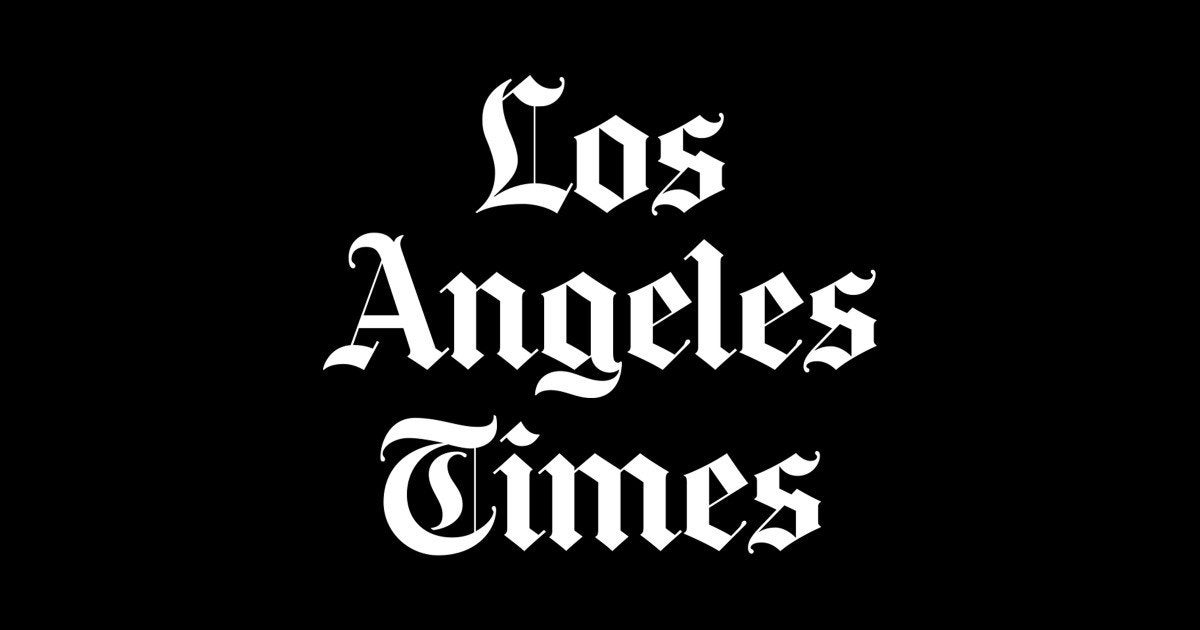

Good morning, good day and good evening to all,
In the depths of the college football off season, I want to spin all of you a yarn of the Butterfly Effect. How one small, seemingly inconsequential event can have ripple effects across decades. The small flutter of a butterfly’s wings in the winter of 2002/2003 can ripple through the world to create a tornado of untold destruction: ruining lives, disrupting economies and changing the very earth as we know it. This story intertwines two historic college football programs and their ups and downs over the last 40 years, their parallels, their continual desire to hire within the family tree, two Mike’s, falls from grace and one’s reemergence.
Listen now about how some pesky high school kids, a woman named after a French city and the revolution of the internet and fandom unintentionally changed the trajectories of two of college football’s Blue Blood programs: one for the better and one for the worse.
—
###The Caterpillar Stage: The 1980’s, National Championship Heritage & Regaining The Pinnacle
Our story begins in the 1980’s with our two titular programs: Nebraska and Alabama. Both schools had been good in the years following the retirement of their deified coaches Bob Devaney and Bear Bryant. Each coach had brought their programs to the zenith of college football with back-to-back national championships in the 1970’s, with neither program reaching the same heights in the ensuing decade. Bob Devaney had dragged Nebraska from lows the William Jennings era to snatch their first national championships in 1970 and 1971 which featured their first Heisman winner. Bear Bryant reigned over a 25-year machine that produced 6 national championships with his last two coming in 1978 and 1979.
In 1990, Nebraska was emerging from a decade of relative frustration as they never reached the highs of the Bob Devaney era, but remained near the peak of college football finishing in the Top 25 each of Tom Osborne’s first 17 years (1973-1989), finishing in the Top 10 13 times and the Top 5 four times. The knock on Osborne would be that he could not win the big game and would not take over Devaney’s mantle and status.
Alabama on the other hand was experiencing winning seasons under Ray Perkins and Bill Curry after Bear Bryant’s retirement following the 1982 season, but were by no means achieving the same level of monumental success. Ray Perkins was a standout player under Bear Bryant in the 1960s before succeeding his teacher. He was coming off his first head coaching stint for the NFL’s New York Giants where he assembled a staff filled with future NFL head coaches the likes of Bill Parcells, Bill Belichick and Romeo Crennel. In his four years at Alabama, Perkins lead the Crimson Tide to a 32-15-1 record which faltered in 1984 with a 5-6 losing record, the first
since before Bear Bryant’s tenure. Amid mounting pressure from boosters and a large contract floated by the Tampa Bay Buccaneers, Perkins departed Alabama after four years.
Bill Curry came to Alabama following a seven year stint at his alma mater, Georgia Tech. Curry built each year at Alabama posting 7-5, 9-3 and 10-2 records in his three years. The two major blemishes that stood out during this time were a televised incident where he pulled his own player, Prince Wimbley, roughly to the sideline following taunting of Miami players and a winless record in the Iron Bowl. Following the 1989 SEC Championship season, Alabama offered Curry a new contract which angered him by including no raise and removing his ability to hire and fire assistant coaches. Curry would go onto a tumultuous career at Kentucky featuring one non-losing record.
North of the border, another former Bear Bryant protégé was looming, but we shall return to him later.
—
###The Pupa Stage: The 1990’s, More Alumni Friends & Y2K
Nebraska surged in the 1990’s under Tom Osborne. Following over a two decade drought, Nebraska won three national championships in four years, winning 1994, 1995 and 1997. Following the 1997 season, Tom Osborne retired following his own 25-year run as a legendary coach and handed the reins over to his hand-picked successor, Frank Solich. Solich was one of Nebraska’s own having been a part of Bob Devaney’s original recruiting class in 1963. As a severely undersized 5’7 153lbs fullback, Solich would climb majorly on the depth chart and minorly in the weight classes on his way to All Big Eight honors.
Frank Solich would return to Nebraska in in 1979 as the Freshman team coach before serving as the running backs coach for 15 seasons under Tom Osborne. Starting out in 1998 and 1999, Solich would lead Nebraska to 9-4 and 12-1 records, including a #3 ranking to end the 1999 season. With a #1 Preseason ranking in 2000, Osborne’s recruits and most of Osborne’s staff retained under their former colleague, the Big Red machine seemed prepared to march into the new millennium. But deep in the gears was the black tar of complacency.
Rewinding to 1990 and moving to Tuscaloosa, Alabama found itself searching for a replacement for SEC champion coach Bill Curry. In another parallel between our two leading characters, the Crimson Tide once again looked to the loins of their legendary coach to find their coach. Gene Stallings was the recently departed head coach of the Phoenix Cardinals who traced his legacy directly to Bear Bryant. Stallings had been a protégé of Bryant, first suffering under Bryant as one of his Texas A&M Junction Boys and then following the multicolored hat to Alabama to start his coaching career.
> The news conference was called to introduce Stallings, who was picked to succeed Bill Curry and restore Bryant-style unity to the football program, which Curry left Sunday to take the reins at Kentucky.
> “You know, I’m not coach Bryant,” Stallings said.
> [Los Angeles Times January 11, 1990](https://www.latimes.com/archives/la-xpm-1990-01-11-sp-574-story.html)
Stallings’ first season stumbled out of the gate with a 7-5 record, but the year was given a silver lining as Stallings became only the second Alabama head coach to defeat Auburn in his first attempt since the renewal of the Iron Bowl in 1948. The 1992 season brought Alabama back to the zenith with a perfect 13-0 record, a win in the inaugural SEC Championship game and a national title. Then the darkness came.
While Stallings’ Crimson Tide continued to win at a strong clip, the NCAA was looming in the shadows. From late 1993 to August 1995, the fabled specter of amateurism and purity in collegiate competition was investigating Alabama. The National Communists Against Athletes found evidence of Stallings and AD Hootie Ingram’s involvement in the falsifying of eligibility for cornerback Antonio Langham who had signed with a sports agent. These infractions resulted in the loss of 30 scholarships from 1995-1998 as well as a 1 year bowl ban. Alabama’s 1993 record was also retroactively changed from 9-3-1 to 1-12.
Following the 1996 season, Stallings decided to step away from his sanctioned Alabama program. The sanctions and their consequences would hobble the Crimson Tide in years to come as they would only win eight or more games three times between Stallings’ departure and the arrival of Nick Saban a decade later as well as posting four of the five losing seasons since Bear Bryant arrived.
Once again to the tree of Bear Bryant did Alabama look, selecting their next coach to be their current defensive coordinator, Bear Bryant player and long time Crimson Tide defensive line coach, Mike DuBose. DuBose, hampered by his predecessor’s sanctions posted a 4-7 record out of the gate, Alabama’s worst record since Jennings Whitworth’s 2-7-1 squad in 1957. DuBose would rise back in 1998 and 1999 climbing each year with a 7-5 then a 10-3 record. Alabama entered the new millennium under DuBose with the most hype since the 1992 national championship but fell out of the gate to UCLA in Los Angeles. That season, Alabama would never be better that .500 suffering embarrassing losses to Arkansas in Fayetteville, independent UCF in Tuscaloosa and a shutout in the Iron Bowl.
Out on the pacific coast, our two antagonists wait for their time in the spotlight.
—
### The Butterfly Stage: 2001-2002, Cracks Appear & The Time Arrives
Nebraska began the 2001 season with high hopes. They had finished the prior season 10-2, ranked #8 in the nation and with a win in the Alamo Bowl over Northwestern to claim dominion over the name the real NU. Solich marched his team proudly to a #2 ranking in the nation on the back of an 11-0 start. Then came the the first shot ringing in the end of Nebraska’s dominance in college football: Black Friday, November 23rd, 2001 in Boulder, Colorado.
Nebraska had it eyes set towards another possible national championship appearance and only needed to take care of long time thorn in the side, Colorado, on their traditional Black Friday matchup. What followed was a dismantling of the hearts of Cornhusker faithful and all they held dear. #14 ranked, 9-2 Colorado proceeded to outdo Nebraska in every way. They took the ball from Nebraska four times and rushed for 380 yards enroute to a 62-36 victory. It is still viewed as one of the darkest days in Nebraska history.
But due to the idiocy of early computer technology, #4 Nebraska still received a birth in the national championship over #2 Oregon and #3 Colorado. Well most know what comes next, an unprepared and at this point historically-schemed Nebraska team ran into the buzzsaw known as the 2001 Miami Hurricanes, one of the greatest football teams of all time and dripping with NFL ready talent.
Nebraska would not recover. In 2002, Solich’s Nebraska would fall to a 7-7 record despite a preseason #10 ranking. This was Nebraska’s worst record in four decades. Many would call for Solich’s head and view the ancient style of offense as a key sticking point. On top of falling recruiting on the back of an aging and growingly complacent coaching staff as well as the dying NFL appeal of the offense, Solich’s days at Nebraska seemed numbered.
Alabama had moved on from native son Mike DuBose following the unimaginable 3-8 season, DuBose was no longer at the helm of the Crimson Tide. Following a coaching search featuring such names as Butch Davis, Frank Beamer, Tommy Bowden, Alabama finally looked away from Bear Bryant towards the man who had turned TCU around quickly, Dennis Franchione. Franchione had led real turn arounds at his previous stops at New Mexico and TCU, taking TCU from 1-10 in 1997 to 7-5, 8-4 and 10-1 in his three years there.
Franchione looked poised to do it again as he led 2001 Alabama back into the win column with a 7-5 season and followed it up with a 10-3 effort in 2002. But the NCAA was looming again following the DuBose years. A star defensive lineman, Albert Means, was coming under their spot light after a tumultuous recruitment from his native Memphis, Tennessee. During the investigation, the NCAA found that Means’ high school head coach had arranged that the high school could be had for a mere $200,000. A number of schools were indicted during this, but the Crimson Tide were hit with a loss of 21 scholarships over three years, a two year bowl ban and five years of probation for their second recent offense. With that coming down ahead of the 2002 season, Franchione repeatedly said leading up to the Iron Bowl that he would not be taking the job at Texas A&M. Alabama had offered him a 10-year, $15 million contract to retain him. He took the job at Texas A&M.
With the stage set, our West Coast players come into focus finally in the summer of 2002, and their involvement will dramatically affect these two programs over the coming 20 years.
—
### The Butterfly’s First Wing: The Wholesome Side
When a man loves a woman, they meet in college, lose contact for some time but reconnect in the end as a dramatic 80s ballad plays in the background. When Mike Riley was in college, he was a defensive back under Bear Bryant at Alabama. The connections were all there. And while in Tuscaloosa, Mike met a young lady named Dee. They were introduced through a friend and became close. But as Mike Riley’s playing career came to an end, he accepted a role in Berkley, California to became a graduate assistant for the Golden Bears. He and Dee lost contact after he moved away. But eventually:
>I just called her one year…kind of out of the blue. I remember the date specifically because there’s an end to this story. I called her on May 22nd and when she answered the phone it had been a long time since we even communicated and when she answered the phone I said, ‘Happy Birthday, Dee’ and she said my birthday is May 2nd!
How unbelievably wholesome and on brand for a man known as one of the nicest coaches in football.
Mike and Dee reconnected and eventually got married. And as some times happens in marriages, they decided to have children, a boy and a girl. As Riley has always pointed out and stressed, fmaily is extremely important to him as well as maintaining the balance away from football.
Which brings us to the summer of 2002, following a stint as the head coach of Oregon State in 1997 and 1998, Riley moved south to San Diego to become the head coach of the Chargers. Even after leaving the team and becoming the associate head coach of the New Orleans Saints, his family remained on the West Coast as he commuted to the Big Easy.
During that winter of 2002-2003, Mike Riley was considered for the newly opened Alabama role following the departure of Dennis Franchione. But it was a non-starter for him, he and Dee had an agreement that their kids would be able to finish school in San Diego.
>”My wife and I went to San Diego with a mutual agreement that our kids were going to finish school there,” said Riley, who played for Bear Bryant at Alabama from 1971-74. “The opportunity to be considered for the Alabama job was, for me in my life, one of the neatest things ever. To basically have to step aside was hard to do, but it was the right thing to do for my family at the time.”
He even said when returning to Corvallis:
>”We were just thankful to get another shot because after that Alabama thing, I was like, ‘Boy, am I stupid,'” Riley said. “I didn’t know if anything was going to work out.”
Had Mike never reunited with Dee and decided to have kids, could he have returned to Tuscaloosa in 2002? We may never know.
—
###The Butterfly’s Second Wing: The Less Wholesome Side
Elsewhere inland from the Pacific Ocean in a place called Pullman was another coach living out a career at his pseudo-alma mater, Mike Price. Washington State had been a mostly hapless program throughout the 1980s before being lifted by Dennis Erickson to a #16 finish in 1988, his second season. After Erickson left to take over the powerhouse Miami where he would win two national championships, Mike Price was elevated to come back to his native Pacific Northwest. Price had been in Pullman since 1989, and though he had his ups and downs during that time, he had led the Cougars to three Top 10 finishes in his 14 seasons there.
Mike Price would eventually be circled by the Alabama athletic department as the man to take the reins after the departure of Franchione. It would not be an easy task with the looming sanctions following the DuBose years and also the relative instability of the last 10 years of Crimson Tide football, but he was ready to take the job after back-to-back 10 win seasons in Pullman.
He was announced in December of 2002 as the new head coach.
During his short time in Alabama, he had already been reprimanded by the Alabama administration for staying out late and drinking too much. But in April, he headed to Pensacola, Florida for a charity golf event. He hopped off his plane in the afternoon and headed to Arety’s Angels, one of Pensacola’s premier establishments of libations and topless women.
>According to the two witnesses, Price spent most of his time that afternoon buying dances from and drinks for Lori (Destiny)
Boudreaux, a 36-year-old married mother of two who has worked in strip clubs for 15 years. “He offered to buy me a drink and asked me to sit with him,” Boudreaux told SI. “I offered him a table dance. He tipped me $60. Then he asked me to take him to the
semiprivate dance area. He got a little bad there. We have rules, and touching is not allowed.”
> After about two hours at the club, Price headed to the golf tournament’s sponsors’ dinner. “On his way out, he told me to
remember his offer and to meet him at the hotel,” Boudreaux told SI. “In 15 years I’ve had thousands of men ask me to meet them
after work. He was asking in ways that told me he’d done this before.” At dinner Price “shook hands and worked the room pretty
well,” according to a coach in attendance. “He gave no indication that he had been out on the town already, and when several of us
looked for him after dinner to go out, he was already gone.”
Source: [Sports Illustrated May 12, 2003](https://vault.si.com/vault/2003/05/12/how-he-met-his-destiny-at-a-strip-club-mike-price-fired) (side note, the whole article is a trip)
This is where Mike Price really screws up.
Mike Price returns to Artey’s and begins getting hands. By this time, everyone in “Cheers with tits” knows Price by name. Later, Price meets up with the two women from the establishment. He then precedes to head to his golf tournament the next day leaving these young women with his credit card. They order $1000 of room service. All on the Alabama family credit card.
Eventually the news starts to circle, but it leaked out into the larger world through something near to Reddit’s heart: message boards.
> On April 23 an Auburn fan with the screen name EagleKlaw visited autigers.com, a website for Tigers boosters, and posted a message that may well have marked the beginning of the end of Mike Price’s brief tenure as football coach at bitter rival Alabama:
“Someone told me the night before the [Emerald Coast Classic Pro-Am] that Mike Price had lost his Visa card and was in a panic
because of who he was with when he lost it. Has anyone else heard about this?”
—
###The Tornado: The Fallout from a Family Man & a Horny Man
So what is the natural disaster on the other side of this? Mike Riley never seriously entertains going to Tuscaloosa despite it being his alma mater and the craze of hiring NFL coaches at that time. He works while commuting from San Diego before returning to Corvallis.
Mike Price, on the other hand, never even sees gameday in Alabama. He is fired immediately following the adventures of Artey’s Angels. Alabama is forced into rushing to hire Mike Shula ahead of the 2003 season.
Shula goes to Tuscaloosa as the second youngest head coach in FBS football. Alabama, hampered by sanctions and departures from Franchione’s 10-3 team struggles to 4-9. He struggles to a .500 record in 2004 as Brody Croyle tears his ACL. His team rebounds in 2005 to 10-2 and he is given a six year extension. He then proceeds to go 6-6 again as his offense becomes anemic. He is fired after the season.
This lines up for Alabama to take a CFB bounce back from the NFL ranks, some guy named Nick Saban. You know the rest.
So where does this leave Nebraska?
The Cornhuskers move on from Solich following 2003 season, one year removed from his .500 season despite a 9-3 record. They decide, in another parallel between our programs, to take an NFL coach in, Bill Callahan. Callahan promises to revolutionize the offense from the ancient I-Formation option to a modern West Coast attack. Callahan falters out of the gate and fails to gain traction with the establishment despite two good seasons and high level recruiting again.
Nebraska then hires Bo Pelini due to his connections to Frank Solich and thus the Osborne tree. The man who hires him? New AD Tom Osborne himself. Pelini regains a level of respectability to the program going 9-4 every single season (minus the three years he went 10-4, but we all know October 4th isn’t Bo Pelini Day, September 4th is). Well Pelini fails to win the big games, routinely getting smacked down when it matters. Bo also doesn’t work and play well with others including his AD and referees and the fans. So the new AD fires him and is determined to hire the polar opposite personality.
Reenter stage right, Mike Riley, our family man and all around wholesome guy off a long stint at Oregon State where he had his ups and downs but kept a really positive attitude, ok? He comes to Nebraska and immediately posts a losing season, Nebraska’s worst since the 1950’s. He then leads the weakest looking Top 10 team of all time which is immediately exposed.
In the midst of a rough start in 2017, Scott Frost, Nebraska’s last national championship quarterback, is leading a miraculous season at UCF in his second year as a coach. Nebraska decides to move quickly tempted by the not-so-forbidden fruit of an inside-the-family-tree hire.
—
###The End: A TL;DR
So a butterfly in the late fall of 2002 decided to flap its wings. This caused one Mike to stand up with his lofty familial values to say no to his alma mater. It made another Mike into an insufferable horndog which led to a school hiring an underprepared coach. Because of this, Alabama is 170-23 under Nick Saban with six national championships and Nebraska is in the midst of 4 straight losing seasons.
TL;DR: Mike Riley, Mike Price and Auburn message boards are responsible for Nebraska and Alabama’s current situations

Must See
-


Football
/ 3 weeks agoHuskers Fight Hard but Fall Short Against UCLA
LINCOLN – The Nebraska Cornhuskers gave it their all on Saturday, with standout efforts...
-
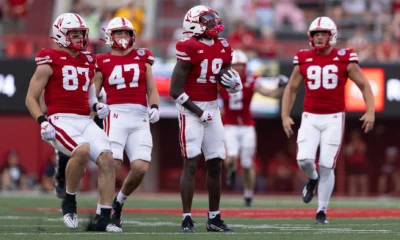

Football
/ 1 month agoGAMEDAY: Nebraska Set to Face Undefeated Indiana in Key Big Ten Showdown
Bloomington, IN – It’s Game Day, Husker Nation! Nebraska (5-1, 2-1 Big Ten) returns...
-


Football
/ 2 months agoBlackshirts Shine as Nebraska Tops Rutgers 14-7 on Homecoming
Lincoln, NE – Nebraska’s Blackshirt defense played a starring role in the Huskers’ 14-7...
By Chris
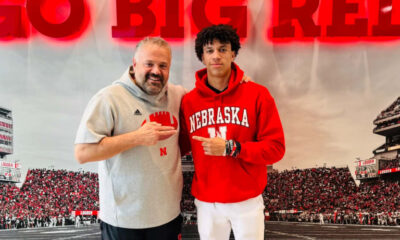

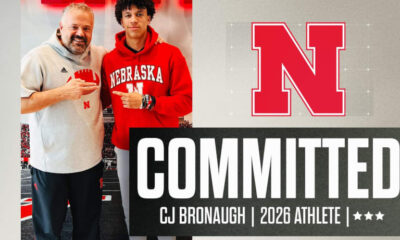

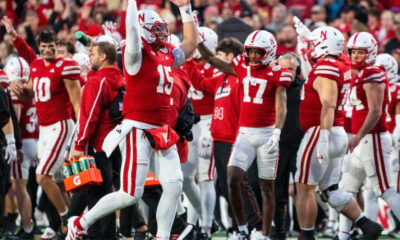

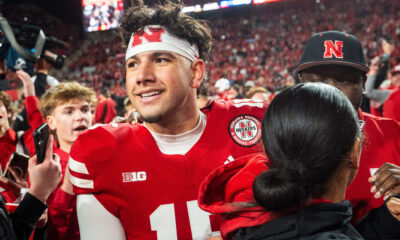



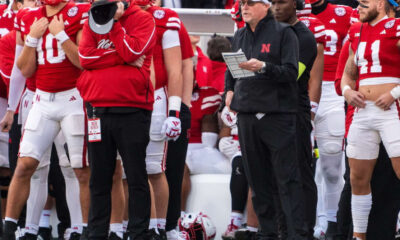



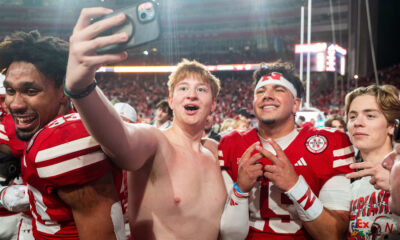

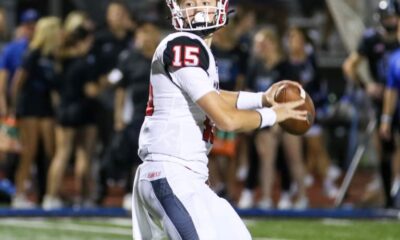




You must be logged in to post a comment Login